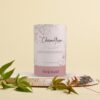What is Post-Acne Hyperpigmentation (PAH)?
Acne on the face is one of the most common skin conditions worldwide, affecting individuals of all ages, from teenagers to adults. But many people find that the real challenge begins once the Acne begins to clear. This is because Acne often leaves behind dark spots, also known as post-acne hyperpigmentation (PAH). PAH is flat and ranges in colour from red to brown to black, depending on skin tone.
These dark spots on the face can be as troublesome as Acne, as it takes weeks or even months to fade, affecting an individual’s confidence and skin appearance.
Common Causes for Acne Spots:
- Inflammatory Acne (pimples, cysts, nodules)
- Popping or picking pimples
- Sun exposure
- Skin irritation from products with harsh chemicals.
- Skin type and tone: People with darker skin tones (Fitzpatrick skin types IV-VI) are more prone to developing hyperpigmentation due to higher melanin production.
How to Treat Acne Dark Spots:
Acne dark spots fade eventually, depending upon the skin texture and other factors. Still, some treatments can speed up the process of fading the spots.
1. Topical Treatments
Several topical treatments are available that can help fade dark spots caused by Acne. These treatments work by either reducing melanin production or promoting skin cell turnover. Some of the most effective ingredients for treating acne dark spots are:
- Vitamin C
- Vitamin C is an antioxidant that helps brighten the skin and inhibit melanin production. It lightens hyperpigmented areas and promotes collagen production. For maximum effectiveness, look for serums or creams containing stabilised vitamin C, such as ascorbic acid.
- Retinoids
- Retinoids (retinol, tretinoin, adapalene) are potent ingredients that accelerate skin cell turnover, helping to fade dark spots and prevent new ones from forming. They also improve the skin’s overall health making it appear smoother and more even. Retinoids can be irritating initially, so it’s important to start with a low concentration and gradually increase the dose.
- Niacinamide
- Niacinamide (vitamin B3) is an excellent ingredient for reducing hyperpigmentation. It works by inhibiting the transfer of melanin to skin cells, thereby lightening dark spots. Niacinamide is also anti-inflammatory, which can help calm irritated skin and prevent the formation of new Acne.
- Alpha Hydroxy Acids (AHAs)
- AHAs, such as glycolic acid and lactic acid, are chemical exfoliants that help to remove dead skin cells and encourage the growth of new, healthy skin. Regular use of AHAs can improve the appearance of dark spots by speeding up skin regeneration and reducing the accumulation of melanin.
- Hydroquinone
- Hydroquinone is a skin-lightening agent that works by inhibiting melanin production. It’s often prescribed by dermatologists for the treatment of hyperpigmentation.
2. Professional Treatments
For stubborn hyperpigmentation, Dermatological procedures and treatments, such as chemical peels, laser treatments, microdermabrasion, and microneedling, provide faster results.
3. Natural Remedies (Supporting Treatments)
While not as effective as clinical treatments, some natural ingredients like Aloe Vera and Green tea can also be helpful.
Final Tips for Managing Hyperpigmentation
- Be patient – Treating post-acne hyperpigmentation takes time.
- Use sunscreen daily – This is the most important step to prevent worsening.
- Avoid harsh treatments – Over-exfoliating can cause more irritation.
- Stick to a routine – Consistency is key to seeing results.
Conclusion
By following these steps, you can effectively manage and fade post-acne hyperpigmentation, revealing clearer and more even-toned skin over time.






























